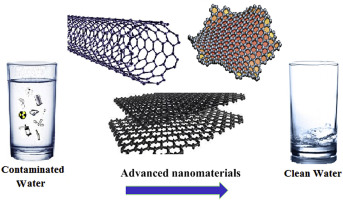Sustainable carbon-based nanoparticles for water treatment

Problem Addressed:
Water and wastewater treatment, particularly industrial water, is crucial and necessary for safeguarding environmental and human health, and it is a serious public health concern. Pesticides, textile dyes, plasticizers, and disinfection by-products such as per- and poly-fluoroalkyl substances (PFASs) are some of the growing pollutants in wastewater discharge that have negative health impacts. Conventional decontamination processes (such as chlorination and ozonation) currently use large amounts of chemicals and can produce harmful and poisonous by-products.
Solution:
Greener nanotechnology and the uses of sustainable nanomaterials are among the advanced technologies that can be used for wastewater treatment, particularly in the treatment of previously untreatable hazardous substances.
Explanation:
Nanomaterials may be used for water treatment and remediation in a variety of ways, including adsorption, photocatalysis, advanced oxidation processes AOPs, filtration, and so on, thanks to their large surface area, chemical reactivity, mechanical qualities, cost-effectiveness, and low power consumption. While continually detecting and treating biological and chemical pollution from man-made, municipal, or industrial waste, these recyclable materials can sustain long-term water quality, accessibility, and feasibility of supplying water. From the standpoints of both environmental cleaning and resource conservation, carbon nanotubes, carbon and graphene quantum dots, and graphene-based nanomaterials may emerge as effective, cost-efficient, and environmentally acceptable replacements for current treatment supplies. For example, oxidation and electrochemical assistance of carbon nanotubes can significantly enhance their adsorption rate and capacity for the removal of pollutants, and may qualify as a new technique in environmental remediation.
Impact and Challenges:
The preparation of these carbon based nanomaterials has very little negative impact on environment as it uses a greener way by using less hazardous and toxic solvents and precursors. Some nanomaterials can also be produced from natural bio-wastes/bio-sources. However, any plant producing these nanomaterials will need membrane filtration to ensure that no nanoparticles are released into the aqueous streams or the atmosphere.
There are still considerable obstacles in using them, such as possible health hazards, greater manufacturing costs, specific selectivity, sustainability, and recyclability. To analyse the dangers of nanoparticles to human health, several research must be conducted, including toxicity analysis, life cycle assessments, strategy evaluations, and their dispersion in water systems.